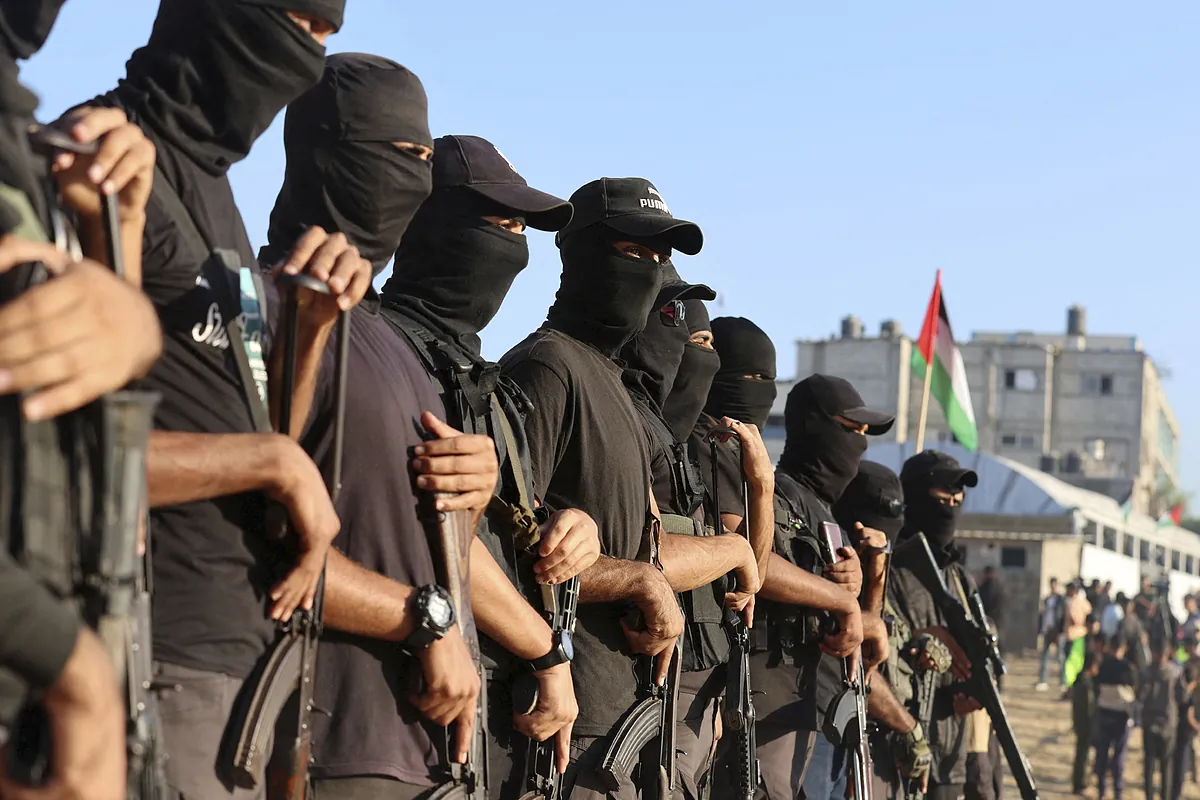The entry into force of the ceasefire in the Gaza Strip has been accompanied by an increased deployment of Hamas militants, who are trying to regain control of the enclave in the face of the withdrawal of Israeli forces. The Palestinian group has mobilized 7,000 of its members to"cleanse Gaza of outlaws and collaborators," according to the Gazan Interior Ministry, in an operation that has led to clashes and executions in public places, raising fears that the conflict is heading towards civil war.
Hamas accuses these militias of collaborating with Israel during its offensive in Gaza, either through attacks against the group or by looting humanitarian aid convoys. So far this week, at least 34 fighters from various militias and eight Hamas members have been killed in these clashes. The Hamas-controlled Gaza government has given these groups an ultimatum to hand over their weapons in exchange for an amnesty."All affected individuals must surrender to the security services within one week to resolve their legal and security situation," it said in a statement.
After two years of Israeli military offensive in the Gaza Strip, public order has completely collapsed, with the destruction of security infrastructure, the deterioration of institutions, a lack of access to basic goods, and the displacement of 90% of the population. This situation has led to the emergence of armed and looting groups, while strengthening others that already existed before the war. Adding to this situation is the internal Hamas system, which has suffered significant losses among its ranks during the conflict—including most of its military leadership—although the current state of its structures is unknown.
Some of these groups have directly challenged Hamas:"To all the rats of Hamas: Your tunnels are destroyed, your rights no longer exist. Repent before it's too late. Hamas no longer exists," said Hossam Al-Astal, leader of the Counter Terrorism Strike Forces, a militia aligned with Israel. A longtime rival of Hamas, the militants have grown stronger as the war has escalated. They operate under the protection of the Israeli army on the outskirts of the southern city of Khan Younis, beyond the yellow line where Israeli forces have withdrawn."No one can enter our area, neither Hamas nor civilians," Al-Astal told Israeli broadcaster Kan News. The militia leader urged civilians not to fear Hamas and assured them that there will be no"version 2.0" of the militant group in the future.
Further south, at the Rafah crossing, Hamas forces have launched attacks against the so-called Popular Forces, commanded by militant Yasser Abu Shabab. Tensions between the two groups escalated months ago, amid accusations by Hamas that Abu Shabab was collaborating with Israel, a claim the group has denied. In late September, a video circulating on Hamas social media showed the public execution of three men accused of collaborating with Israel. One of the executioners named Abu Shabab as the next target. Shabab, for its part, has also challenged the armed group, claiming it will take control of Gaza in what it called an"inevitable civil war." An investigation by British outlet Sky News revealed in May that the militant group was collaborating with Israel in Rafah and was responsible for looting aid trucks.
Hamas's fight also extends to Gaza City, where they are pursuing the Doghmush clan, which includes former fighters from both Hamas and Fatah, the ruling West Bank. Despite being accused of collaborating with Israel, one of the clan's leaders, Nizar Doghmush, told the Los Angeles Times that the Israeli army had contacted them to manage a supposed humanitarian zone in Gaza City, an offer they rejected. In a video posted on Hamas social media, a public execution of four alleged Doghmush clan members can be seen."A death sentence has been decided against those who betrayed the homeland, betrayed their people and the cause, who went hand in hand with the occupation to kill their own people," a Hamas member declared in the video before executing one of the detainees.
While the clashes are occurring outside the truce with Israel, the arrests and executions highlight key unresolved"day after" issues, such as the disarmament of Hamas and the regional stabilization forces Washington wants to deploy in Gaza. Israel has declared that it will not allow either the Palestinian Authority or Hamas to play a role in the future government. While Hamas accepts a local technocratic government, it has not resolved the issue of its disarmament.
For his part, US President Donald Trump suggested that Hamas has the green light for these operations in the enclave."They want to end the problems and they've been very vocal about that. We've given them our approval for a while. Close to two million people are returning to buildings that have been demolished, and bad things can happen. So we want to make it safe. I think everything will be fine," Trump said.

